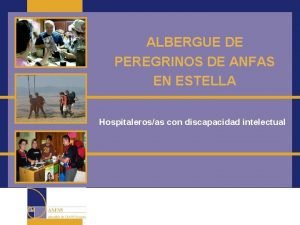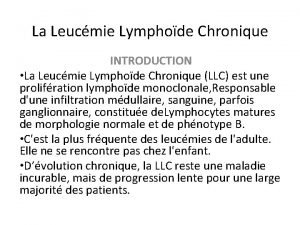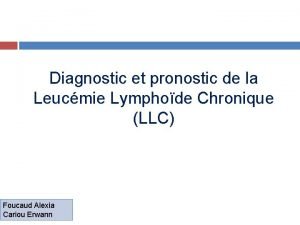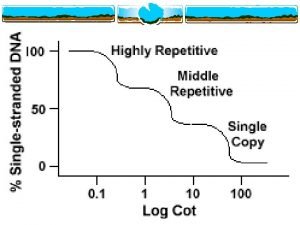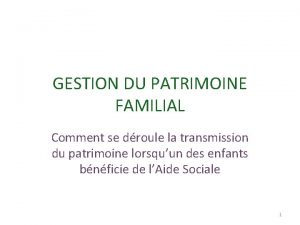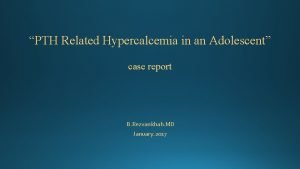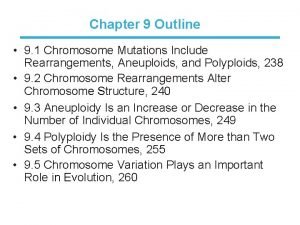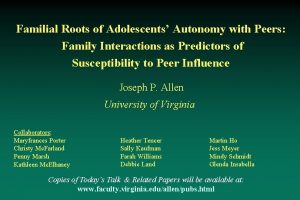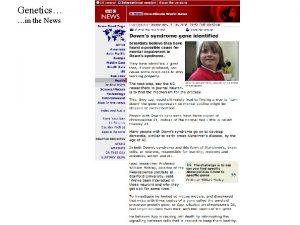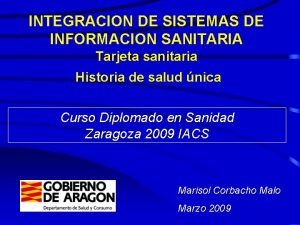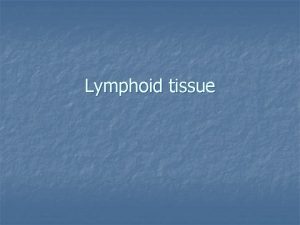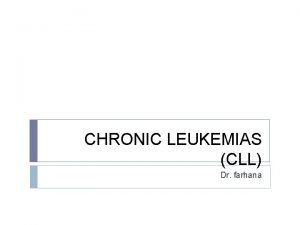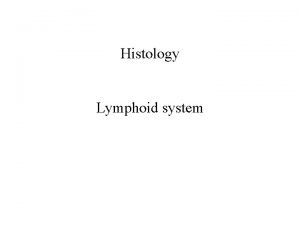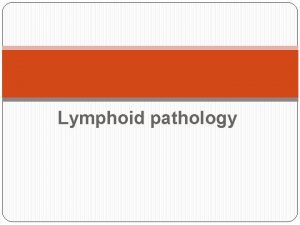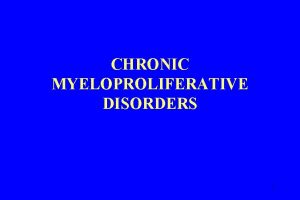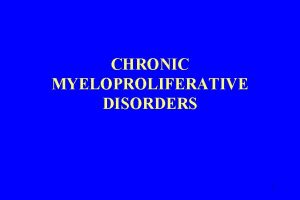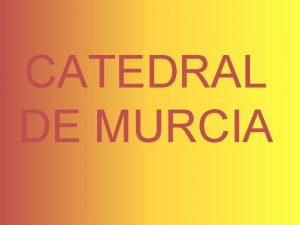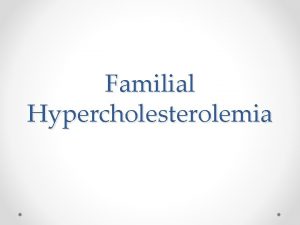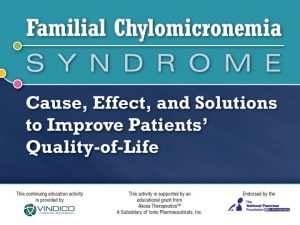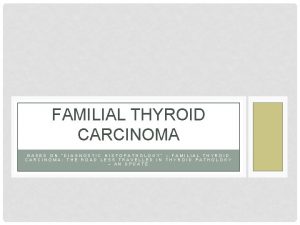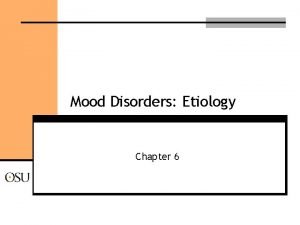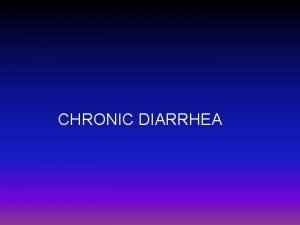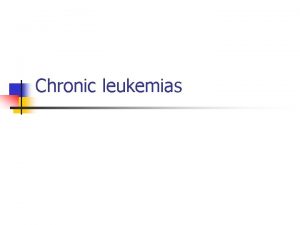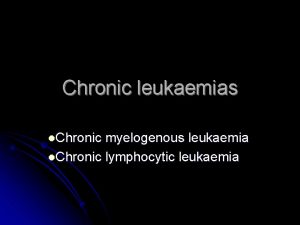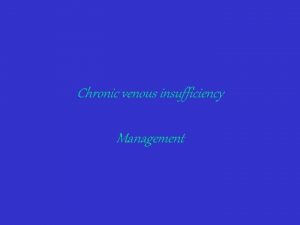FAMILIAL CHRONIC LYMPHOID DISORDERS Dr Estella Matutes Murcia


















![Pathogenesis of Familial CLL • High-penetrance mutations [Genome-wide linkage analysis] OR • Polygenic model Pathogenesis of Familial CLL • High-penetrance mutations [Genome-wide linkage analysis] OR • Polygenic model](https://slidetodoc.com/presentation_image_h2/4f6cdac7c089e42b092562a0565e4232/image-19.jpg)


- Slides: 21

FAMILIAL CHRONIC LYMPHOID DISORDERS Dr Estella Matutes Murcia, November 2006

1887 +1953 1884 1895 1897 1900 +1996 +1968 +1984 +1928 +1980 1903 +1968 CLL 1907 1909 1912 +1912 1915 1917 1925 1919 +1980 +1994

Evidence for a genetic predisposition Epidemiological studies (cohort and case control) Vertical transmission and “anticipation” Significantly higher incidence of asymptomatic MBL

Familial risks of CLL The main evidence derives from: Cohort studies – risk 2. 4 -5. 7 (Gunz, 1975; Giles, 1984; Goldgar, 1994) Case control studies – risk 2. 3 -4. 3 (Linet, 1989; Pattern, 1991; Cartwright, 1987) Relatives of CLL patients have a six-fold increase in risk

Videbaek’s pedigree 14 revisited (1947 -2004)* Original family = 55 members Current pedigree = 221 descendents 10 diagnosed with CLL; 1 T-cell lymphoma 18 non-haematological cancers (5 breast) Relative risk for B-cell LPD = 7. 9 (p < 0. 001) This family provides further support for an inherited predisposition to CLL *Jønsson, Houlston, Catovsky et al (Leukemia, 19, 1025, 2005)

Familial risks of B-cell LPDs Evidence of pleiotropism Case Familial RR (95%CI) CLL First-degree relative with CLL 7. 5 (3. 6 -15. 6) CLL NHL HL NHL CLL 1. 5 2. 4 2. 9 2. 1 (1. 0 -2. 2) (1. 1 -5. 1) (1. 0 -8. 5) (1. 2 -3. 8) Goldin et al. , (2004) Blood 104: 1850; Goldin et al. , (2004) Cancer 100; 1902 Goldin et al. , (2004) Cancer Epid Bio Prev 13: 1415

Family 005 Family 094 Family 037 Family 039

Anticipation in Familial CLL Yuille (1998) Goldin (1999) Wiernik (2001) # families 10 13 10 Mean age 74 68 72 Mean age 52 51 51 A large epidemiological study showed no evidence of anticipation in CLL & NHL: Daugherty et al , Cancer Epidemiol Biomarkers Prev. (2005) 14: 1245

Monoclonal B-cell lymphocytosis (MBL) • Diagnostic criteria recently reported (Marti et al, BJH 130: 325, 2005) • Flow cytometry can detect ‘sub-clinical’ MBL in normal relatives of F-CLL and provides the possibility of extending the number of affecteds in linkage families • MBL is found in 3. 5% of normal adults by flow cytometry (Rawstron et al, Blood 100: 2289 & 100: 635, 2002)

Incidence of MBL in Familial CLL Rawstrom et al (2002) 25% CD 5 20% Familial Control 15% 10% CD 20 b 9 7 D C 5% 0% <50 50 -59 60 -69 70+ years

MBL in F-CLL: young adults show the highest relative risk* Age group General population Normal relatives from CLL families Relative Risk (95% C. I. ) 33/1242 (2. 7%) 8/65 (12. 3%) 3. 9 (2. 0 - 7. 6) All ages 2/17 (11. 8%) 16. 9 (6. 6 – 43. 3) 16 - 40 1/365 (0. 3%) P-value Fishers exact test 0. 001 0. 005 40 - 60 10/457 (2. 1%) 3/30 (10. 0%) 4. 1 (1. 4 - 11. 9) 0. 037 60 - 90 22/420 (5. 2%) 3/18 (16. 7%) 3. 5 (1. 1 - 11. 2) 0. 067 *Tute, Yuille, Rawstron et al (2006) Leukemia 20: 728

Familial CLL No differences from sporadic CLL in: • Age, M: F ratio, incidence of Zap-70+ * • Ig. VH usage and frequency of somatic mutation * • ATM mutations • Frequency of 6 q 21, 11 q 23, 13 q 14 and p 53 deletions or trisomy 12 * Rassenti et al (2003) Blood 102: 670 a A study from the USA CLL Research Consortium

Strategies for identifying CLL predisposition genes 1: Linkage analysis of families to identify moderate-high penetrance alleles 2: Association studies of SNPs to identify low penetrance alleles 3: Screening familial cases for mutations in candidate genes

UK Familial CLL study Families collected to date • 456 families documented (339 with 2 or more CLL cases) • 401 of these we have at least 1 sample from the family • 87 families have at least 1 case of CLL and 1 or more cases of LPD • 33 families with 2 or more NHL/HL cases

Linkage analysis in Familial CLL A high density single nucleotide polymorphism (SNP) - based genomewide linkage search was undertaken on 115 CLL families by our group using the Affymetrix Mapping 10 K Array (11, 555 markers)

Linkage analysis in Familial CLL • Sample set used for SNP linkage analysis: 115 CLL/CLL-LPD families 80 families with 2 affecteds 28 families with 3 affecteds 5 families with 4 affecteds 2 families with 5+ affecteds • Median age at diagnosis of CLL 61 years Sellick et al, Am J Hum Genetics (2005) 77: 420 -9

Familial CLL – linkage analysis Chromosomal Region Nonparametric Max p NPL Dominant model Max α HLOD Recessive model Max α HLOD 5 q 22 -23 2. 01 0. 022 1. 02 0. 29 1. 35 0. 20 6 p 22 2. 25 0. 012 1. 05 0. 29 1. 49 0. 22 10 q 25 2. 12 0. 017 0. 94 0. 28 1. 28 0. 22 11 p 11 3. 14 0. 0008 1. 85 0. 41 2. 78 0. 32 14 q 32 2. 03 0. 021 1. 18 0. 34 0. 91 0. 19 Sellick et al, Am J Hum Genet, 77, 420 (2005)

Linkage analysis: future work • Genotyping an additional 40 families • Screening family members for MBL status • Currently undertaking mutation screening of genes mapping to linked regions e. g. the 11 p 11 locus: SPI 1 and MADD
![Pathogenesis of Familial CLL Highpenetrance mutations Genomewide linkage analysis OR Polygenic model Pathogenesis of Familial CLL • High-penetrance mutations [Genome-wide linkage analysis] OR • Polygenic model](https://slidetodoc.com/presentation_image_h2/4f6cdac7c089e42b092562a0565e4232/image-19.jpg)
Pathogenesis of Familial CLL • High-penetrance mutations [Genome-wide linkage analysis] OR • Polygenic model of low penetrance alleles [Association studies in ethnically matched cases and controls comparing the frequency of polymorphic genotypes]

SUMMARY • Studies are preliminary and “on going” but this requires international collaboration, economical imput, application of new technologies and patient’s and relatives “willing” • At present it is premature to set up a program of counselling as a predisposing gene(s) has not been identified although patients and relatives are aware of the inherited susceptibility

 Anfas estella
Anfas estella Flinders model
Flinders model Lymphode
Lymphode Immunoblaste
Immunoblaste Hyperlymphocytose
Hyperlymphocytose Leucmie
Leucmie Danette format familial
Danette format familial Familial down syndrome
Familial down syndrome Familial hypocalciuric hypercalcemia
Familial hypocalciuric hypercalcemia Gestion de patrimoine familial
Gestion de patrimoine familial Mild hypercalcemia
Mild hypercalcemia Edward syndrome
Edward syndrome Familial hypertriglyceridemia
Familial hypertriglyceridemia Familial roots
Familial roots Familial hypertriglyceridemia
Familial hypertriglyceridemia Paracentric inversion example
Paracentric inversion example Ecosistema de ribera
Ecosistema de ribera Miguel medina poeta
Miguel medina poeta Elementos de una tarjeta
Elementos de una tarjeta Bicicletas montoya murcia
Bicicletas montoya murcia Colegio santa joaquina de vedruna murcia
Colegio santa joaquina de vedruna murcia Procesion de los salzillos murcia 2012
Procesion de los salzillos murcia 2012
